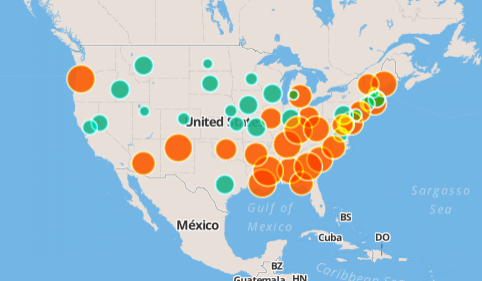US Farm Bill: House Approves $20.5B Cut To Food Stamps

There were 26.5 million Americans benefiting from the Supplemental Nutrition Assistance Program (SNAP), or food stamps, at the end of 2007. Following a recession in fall 2008, that number increased and is now at 47.6 million as of February 2013. That’s almost double what it was five years ago and represents 15 percent of the U.S. population. Like the recipients, the cost of running the SNAP program also grew from $30.3 billion in 2007 to $78.4 billion in 2012.
The expansion of the SNAP program that Congress approved after the recession expires later this year.
During a contentious debate over the 2013 Farm Bill last week, lawmakers in the House Agriculture Committee approved $20.5 billion in cuts to SNAP over the next 10 years. Should that bill become law, nearly two million people will lose access to food stamps, and 200,000 schoolchildren will no longer get free lunches, according to The Center on Budget and Policy Priorities.
Check out this chart that shows the increase in SNAP participation from December 1969 to May 2013.
One reason the cost of running the SNAP program outpaces the increasing participation is the average amount given to individuals. In 2007, that amount was $96.18 but it grew nearly 40 percent to $133.41 in 2013, not adjusting for inflation.
Right now the current maximum monthly payment is $668 for a family of four. As income rises, SNAP assistance decreases.
Food prices are another factor. While overall inflation has averaged around 2 percent each year, according to the Consumer Price Index, the cost of food has been rising at more than double that rate, between 3 percent and 5.5 percent annually. But the rising cost of food accounts for only a small part of the increase in the average amount given to an individual on food stamps.
While 15 percent of the U.S. population participate in the SNAP program, the number is much higher in some cases at the state level. For example, in Mississippi, Oregon, New Mexico, Louisiana and Tennessee, more than 20 percent of the population benefit from the SNAP program.
Rep. Stephen Fincher, R-Tenn., whose home state has 1,335,790 people, or 21 percent of the population, on food stamps, is among the staunch supporters of cuts to the SNAP program.
“The role of citizens, of Christians, of humanity, is to take care of each other, but not for Washington to steal from those in the country and give to others in the country,” he said at a gathering at a Memphis Holiday Inn.
“The one who is unwilling to work shall not eat,” he said at a later date, citing a Bible quote taken from the Book of Thessalonians.
Here's a map of per capita participation rates in the SNAP program, by state. Orange indicates that state has a higher participation rate than the national average of 15 percent; teal indicates participation below that number. The size of the bubble markers are proportionate to the per-capita participation rate of that state. Click on any bubble for more info.
© Copyright IBTimes 2024. All rights reserved.





















